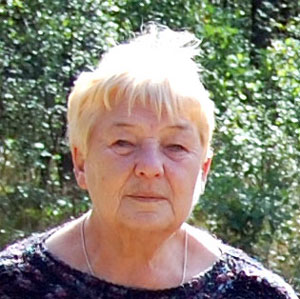Prof. dr hab. Magdalena Mączyńska
 Archaeology Institute
Archaeology Institute
University of Łódź
ul. Uniwersytecka 3
PL-90-137 Łódź
magdalena.babidol@gmail.com
I am full professor at the Institute of Archaeology University of Łódź. I specialise in the archaeology of the Roman Period and the Migration Period in the Barbaricum of Central and Eastern Europe. I defended my thesis and assistant professorship at the Jagiellonian University in Cracow (1975; 1986) and received my habilitation from the University of Zurich (1989). During my twelve years abroad (1981-1993) I was Privatdozent of that university (eight semesters) and lectured at universities in Kiel and Vienna (four semesters); I was also archaeologist in the Department of Administration of the Principality of Liechtenstein. Since 1993, I have continued as professor with the University of Łódź. I have written eight books and 130 other scientific publications. I took part in many archaeological excavations, mainly at the cemetery of the Wielbark Culture in Pomerania (since 1978). Current areas of research: the archaeology of the Crimea in 4th – 7th century A.D., the advanced stage of the Migration Period in Poland.
Selected publications
- Die Perlen der römischen Kaiserzeit und der frühen Völkerwanderungszeit im mitteleuropäischen Barbaricum, Römisch-Germanische Forschungen 43, Mainz 1985.
- Das Frauentrachtzuberhör des mittel- und osteuropäischen Barbaricums in der römischen Kaiserzeit, Kraków 1989.
- Die Völkerwanderung. Geschichte einer ruhelosen Epoche im 4. und 5. Jahrhundert, (1 wydanie) Zürich 1993 (2 wydanie Zürich 1998; 3 wydanie Düsseldorf-Zürich 2004.
- Wędrówki ludów. Historia niespokojnej epoki IV i V wieku, Warszawa 1996.
- La fin de la culture de Przeworsk, (w:) J. Tejral, Ch. Pilet, M. Kazanski, (red.), L’occident romain et l’Europe Centrale à l’époque des Grandes Migrations, Spisy Arheologického Ústavu AV ČR Brno 13. Brno 1999, s. 141-170.
- Die Endphase der Przeworsk-Kultur, Ethnographisch-Archäologische Zeitschrift 39, 1998 (1999), s. 66-99.
- Schyłkowa faza kultury przeworskiej, Kultura przeworska 4, 1999, s. 25-53.
- Ein frühvölkerwanderungszeitliches Kammergrab aus dem Gräberfeld Almalyk-dere bei Mangup auf der Krim, (w:) M. Mączyńska, T., Grabarczyk (red.), Die spätrömische Kaiserzeit und die frühe Völkerwanderungszeit in Mittel- und Osteuropa, Łódź, 2000, s. 522-544 (współautorstwo: A. Gercen).
- Przeworsk-Kultur. Jüngere und späte Römische Kaiserzeit, RGA 23. Berlin-New York, 2003, s. 553-567.
- La question de l’origine des pendeloques en forme de lunules, (w:) X. Delestre, P. Périn, M. Kazanski (red.), La Méditerranée et le monde mérovingien: témoins archéologiques, Aix-en-Provence, 2005, s. 247-255.
- Pommern in der Völkerwanderungszeit - 20 Jahre nach dem Aufsatz von Kazimierz Godłowski, (w:) J. Tejral (red.), Barbaren im Wandel. Beiträge zur Kultur und Identitätsumbildung in der Völkerwanderungszeit, Spisy Archeologického Ústavu AV ČR Brno 26. Brno 2007, s. 147-171.
- Zmierzch kultury wielbarskiej – czego nie wiemy?, (w:) M. Fudziński, H. Paner (red.), Nowe materiały i interpretacje. Stan dyskusji na temat kultury wielbarskiej, Gdańsk 2007, s. 365-401.
- Trzy fibule cykadowate z kręgu bałtyjskiego, (w:) A. Bitner-Wróblewska, G. Iwanowska (red.), Bałtowie i ich sąsiedzi. Marian Kaczyński in memoriam. Warszawa, 2009, s. 393-404.
- Der frühvölkerwanderungszeitliche Hortfund aus Łubiana, Kreis Kościerzyna (Pommern), Bericht der Römisch-Germanischen Kommission 90, s. 7-482, 2009, 2011.


